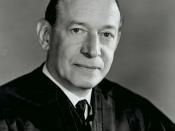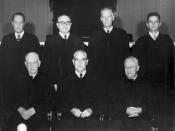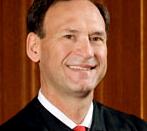Clarence Earl Gideon, age 51 at the time of his petition to the Supreme Court, was a "destitute" man. He had never been able to hold a job, and often turned to a life of crime to support himself. Gideon had been convicted of four previous felonies before breaking into the Bay Harbor Poolroom in Panama City, Florida. During his trial, the judge had refused to appoint an attorney to represent Gideon, even though he didn't have the funds to hire one himself. As a result, Gideon was forced into a juryless trial that he later felt was very unfair, and he later brought up his right to a counsel when presenting his case to the Supreme Court. Gideon was hoping to invoke a very rare reversal of the court in which it overturns a much used precedent. The precedent in question is Betts v. Brady, in which a judge decided that states have the right to deny counsel in some federal cases.
To make an appeal, Gideon first sent the Supreme Court a copy of his in forma pauperis and habeus corpus petitions. These are needed if you are a poor defendent trying to get an attorney and lessen court charges. These were both denied by the Florida Supreme Court. Gideon asked for a writ of certiorari, which would bring his case from the harsh Florida Supreme Court to the U.S. Supreme Court. Gideon had to prepare all of these petitions by himself, and he did so while in prison. There was nothing illegal about this, though it must have been strange for the judges to have a petition brought before them written in pencil on prison paper. Gideon made no errors in his petition, and sent it to the court in a timely manner.
The Supreme...


